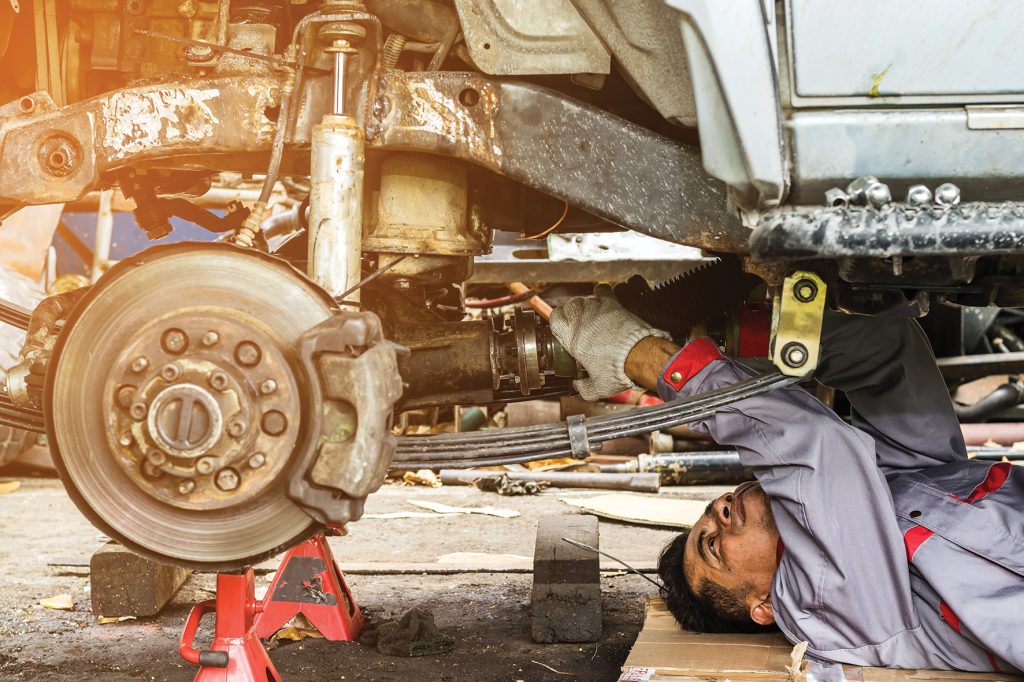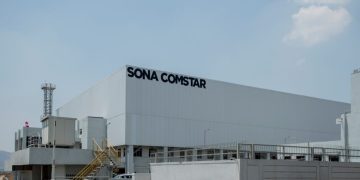In an era where technological advancement is rapidly transforming industries, the commercial vehicle maintenance sector in India stands at the cusp of a significant revolution. Indian commercial vehicle landscape, diverse and expansive, is a critical pillar in the nation’s economy. Ranging from the robust trucks and lorries traversing the vast Indian highways to the vital buses connecting cities and the ubiquitous auto-rickshaws weaving through urban traffic, these vehicles are more than just modes of transportation; they are the lifeblood of India’s economic and social fabric. However, this sector faces a unique challenge: aligning the benefits of technological integration with the need for cost-effective solutions in a market highly sensitive to price. While advanced diagnostics, fleet management software, and mobile applications offer sophisticated solutions to enhance efficiency and reliability, they must be complemented by innovative, low-cost maintenance strategies that resonate with the Indian context.
This article delves into how upskilling mechanics for advanced repairs, establishing localised service networks, and standardising parts and repairs can offer sustainable and budget-friendly alternatives to high-tech solutions. By weaving together technological advancements and low-cost innovative strategies, we can embark on a journey to revolutionise commercial vehicle maintenance in India, creating a win-win scenario that boosts economy and efficiency.

Types of Commercial Vehicles and Their Roles
India’s commercial vehicle landscape is as diverse as its geography, playing an integral role in its burgeoning economy. At the heart of this sector are the robust trucks and lorries, the workhorses of the Indian highways, ferrying goods across the length and breadth of the country. They range from small, light commercial vehicles to heavy-duty trucks, each designed for specific cargo and distances, forming the backbone of India’s freight transportation.
Equally vital are the buses – city buses, inter-city coaches, and school buses. These buses not only connect cities and towns but also serve as the primary mode of public transport within urban areas, crucial for daily commuting. The city buses navigate through bustling streets, while inter-city buses and coaches ply on longer routes, offering vital links between different regions.
The urban landscape sees a dominance of tempos and mini trucks, agile enough to manoeuvre through narrow lanes, ideal for intra-city deliveries and small-scale logistics. These vehicles are essential for last-mile connectivity, ensuring goods reach from local warehouses to businesses and homes.
Auto-rickshaws, the three-wheeled wonders, are omnipresent in both urban and rural India. They are not just a mode of transport but a lifeline for millions, offering affordable and accessible commuting options.
Lastly, the category of specialised vehicles like pickup trucks, vans, and construction vehicles cater to specific needs. From delivering perishables in refrigerated vans to aiding in construction with heavy machinery like dump trucks and excavators, their roles are pivotal in specific sectors.
Each of these vehicles, distinct in their purpose, collectively fortify the transport infrastructure of India, a testament to the country’s economic diversity and dynamism.
Economic Contribution of CVs
The commercial vehicle (CV) sector in India plays a pivotal role in the nation’s economy, significantly bolstering various industries and contributing to the national GDP. According to the Society of Indian Automobile Manufacturers (SIAM), this sector has experienced a marked increase in sales, highlighting its critical role in economic growth. The market size of commercial vehicles in India is projected to reach US$ 48.27 bln in 2024 and is expected to grow to US$ 62.95 bln by 2029, with a Compound Annual Growth Rate (CAGR) of 5.45% during the forecast period from 2024 to 2029. The market demonstrates a moderate level of consolidation, with the top five companies collectively holding a 132.45% share. Key industry players include Eicher Motors Limited, Ford Motor Company, Mahindra & Mahindra Limited, Tata Motors Limited, and Volvo Group, listed in alphabetical order. The demand for heavier-duty trucks is on the rise, fueled by increased freight movement and significant government investment in infrastructure. The Economic Survey 2021 indicates that the logistics sector, which predominantly utilises commercial vehicles, contributes 13-14% to the country’s GDP. Furthermore, the CV sector is a major employment generator in India, employing over 22 million people. Despite these positive indicators, Fitch Ratings recently reported a forecast of a slowdown in the growth of commercial vehicle sales volumes in India, shifting to low-to-mid-single digits due to rising ownership costs. Consequently, companies that provide maintenance services to CV owners must focus on cost-effective solutions to ensure vehicle upkeep does not become a financial burden. This situation presents a unique opportunity for market differentiation and innovation in the maintenance service sector. (Source: Mordor Intelligence, IBEF, Economic Times)
Overview of Unique Maintenance Needs
In India, the diverse range of commercial vehicles each has unique maintenance needs, crucial for their optimal performance and longevity. For trucks and lorries, the focus is primarily on engine maintenance, brake systems, and suspension checks, especially for heavy-duty trucks carrying substantial loads over long distances. Regular oil changes, tyre checks, and brake system inspections are essential to ensure their roadworthiness and safety.
Buses, serving as key players in public transport, require meticulous maintenance of their engine systems, seating interior components, and safety features like emergency exits and lighting. Regular checks of the air conditioning systems (for AC buses), especially in city buses, are vital for passenger
comfort.
Tempos and mini trucks, often used for intra-city logistics, demand frequent maintenance due to their constant stop-and-go nature. This includes regular servicing of their smaller engines, brake systems, and suspension components to handle the regular loading and unloading activities.
Auto-rickshaws, with their two-stroke or four-stroke engines, require consistent engine maintenance, oil changes, and brake checks. Given their extensive use in urban environments, emissions control is also a critical aspect of their maintenance.
Specialised commercial vehicles like pickup trucks, vans, and construction vehicles have specific maintenance needs based on their usage. For instance, refrigerated vans need regular checks of their cooling systems, while construction vehicles like excavators and dump trucks require frequent hydraulic system and tyre maintenance due to their heavy-duty usage.
Financial Constraints and Impact
In the commercial vehicle sector, budget constraints critically impact maintenance decisions. Vehicle owners often grapple with the trade-off between immediate cost savings and long-term vehicle health. Limited finances may lead to postponed or overlooked maintenance, seemingly economical initially, but potentially leading to more significant issues later. This delay in necessary maintenance heightens the risk of breakdowns, compromises safety, and can reduce fuel efficiency, thereby increasing long-term operational costs. These maintenance lapses not only affect the vehicle owners but also have wider implications: unreliable services, supply chain disruptions, and escalated transportation costs. Poorly maintained vehicles also raise safety concerns, amplifying accident risks and causing traffic problems, which in turn impede economic activities. Therefore, the challenge for commercial vehicle owners lies in balancing tight budgets with the imperative of regular, comprehensive maintenance, a balance that is crucial for their financial viability, service reliability, and broader economic and public safety impacts.
Integrating Technology for Efficient Maintenance
Integrating advanced technology into maintenance practices is a strategic move that Indian maintenance companies should actively consider for enhancing the efficiency and reliability of commercial vehicle care.
Advanced diagnostic tools play a crucial role in pre-empting breakdowns. By integrating technologies like telematics and onboard diagnostics, companies can monitor vehicle performance in real time. This will allow for early detection of potential issues, reducing the likelihood of unexpected breakdowns and costly repairs. Predictive maintenance, utilising data analytics, can forecast wear and tear on critical components, enabling proactive maintenance rather than reactive fixes. This approach will not only extend the life of the vehicle but also will ensure higher uptime and reliability.
Digital platforms in fleet management can significantly optimise maintenance schedules and costs. Such software can track vehicle usage, maintenance history, and predict future service requirements. By consolidating this data, fleet managers will be able to make informed decisions about when and how maintenance should be performed, reducing downtime and improving operational efficiency. Additionally, this software will be able to help manage inventory, track parts usage, and automate many aspects of fleet management, leading to cost savings and improved resource allocation.
Mobile applications can greatly enhance communication and scheduling between service providers and vehicle owners. These apps can facilitate appointment scheduling, service reminders, and provide real-time updates on maintenance progress. They will also be able to offer a platform for vehicle owners to report issues, track service history, and access maintenance advice. This level of engagement not only will improve customer satisfaction but also will help in maintaining a regular and efficient maintenance schedule.
By adopting these technological solutions, Indian maintenance companies will be able to offer more reliable, efficient, and cost-effective services, catering to the unique needs of the commercial vehicle sector.
Global Examples of Technology Integrated Maintenance
Numerous global enterprises are exemplary in their integration of advanced technology to deliver effective and valuable maintenance services to commercial vehicle owners. These businesses leverage cutting-edge technological solutions to enhance the efficiency, reliability, and cost-effectiveness of maintenance programmes, thereby setting industry standards in customer service and operational excellence.
Paccar – The company, through its full-service leasing group PacLease, has integrated advanced telematics functionality in its Kenworth and Peterbilt truck fleets across the U.S. This system, implemented in over 3,500 units, allows for real-time communication of critical vehicle conditions to dispatch. The maintenance manager of the fleet has the option to communicate with the customer’s dispatcher or, in certain situations, directly message the driver. This real-time communication capability enables the potential to pre-emptively address issues. For example, if a truck’s lights or accessories are left on, or if there is a security breach like an open door, the system can alert the necessary parties. A key focus of the telematics system is tyre maintenance, as tyres represent a significant operating cost. The system can monitor and identify overinflated tyres, a condition that typically results from incorrect air filling. Addressing this issue by reducing the tyre pressure can substantially increase the tyre’s lifespan and reduce costs. This proactive intervention not only prevents the escalation of maintenance issues but also encourages driving behaviours that avoid random failures.
Platform Science and Uptake– Platform Science, the leading connected vehicle platform, and Uptake, a leader in predictive analytics software-as-a-service (SaaS), got into a partnership to extend data-driven insights and predictive maintenance capabilities to some of the largest vehicle fleets. Platform Science’s Virtual Vehicle platform offers workflow, navigation, telematics, and a range of other solutions to the most innovative fleets and commercial vehicles. Fleets using Uptake via the Virtual Vehicle platform will be equipped with real-time and historical data to better inform maintenance strategies and predict vehicle needs. These insights can be leveraged to maximise mechanics’ time, improve labour effectiveness and streamline operations. These will also enable fleet managers to transition from calendar-based preventive maintenance schedules to a dynamic predictive maintenance strategy. Users will also get improved visibility into the condition of their vehicles, which is critical to their longevity. The end result will be as much as 20% reduction in downtime and impactful maintenance operations for optimal fleet performance. The transition will enable fleets to save on repair costs by an average of 12% and minimise delays by helping them prevent unplanned roadside breakdowns and catastrophic failures.

Transervice – The logistics company offers a predictive maintenance solution to commercial vehicle (CV) owners that focuses on pre-emptive vehicle system assessments and analyses. This approach enables timely maintenance decisions before system failures occur, ensuring vehicle reliability and reducing unexpected downtime. The company partners with fleets to offer dedicated contracted maintenance and full-service leasing, among other services. To facilitate this, Transervice employs Trimble’s TMT fleet maintenance management software, which tracks various aspects such as inventory, cost, and component lifecycle. A significant aspect of Transervice’s predictive maintenance approach involves analysing the performance and optimal lifecycle of vehicle components. The team studies components like alternators, starters, or batteries to predict their average lifecycles and failure points. For instance, if a component typically fails at 350,000 kms, they may proactively replace it before reaching this mileage to prevent breakdowns. This process involves determining median breakdown mileage and variations based on different vehicle models and manufacturers. By customising maintenance schedules to the specific requirements of each truck manufacturer, Transervice ensures that components like diesel exhaust fluid (DEF) doser valves are replaced at the right intervals, which can vary between truck brands like Freightliner and Peterbilt. This tailored approach to predictive maintenance demonstrates Transervice’s commitment to providing efficient and cost-effective maintenance solutions for commercial vehicle fleets.
Complimentary Low-Cost Solutions
In India, where cost-effective solutions are key to business differentiation, the integration of technology in vehicle maintenance, though essential, is just one piece of the puzzle. Indian market, known for its focus on cost-efficiency, could benefit significantly from innovative low-cost maintenance solutions. These solutions can complement technological advancements and provide alternate, budget-friendly options for effective vehicle maintenance.
Training and Skill Development
Upskilling mechanics to handle advanced repairs is a critical component. In a market where newer technologies and complex vehicle systems are becoming commonplace, trained mechanics can provide high-quality services at a lower cost compared to high-tech solutions. Investing in skill development programmes ensures that mechanics are equipped with the knowledge to handle advanced diagnostic tools and repair techniques. This not only improves the quality of maintenance services but also supports local employment, creating a win-win situation.
Localised Service Networks
Developing community-based maintenance networks can significantly reduce costs. By establishing localised service centres, maintenance can be made more accessible and affordable for vehicle owners. These networks can leverage local expertise and resources, reducing the dependency on expensive, centralised facilities. Additionally, a community-based approach ensures faster service, minimising downtime for commercial vehicles, which is crucial for their operational efficiency.
Standardisation of Parts and Repairs
Standardisation of parts and repairs is another avenue to cut costs and improve service efficiency. By using standardised parts, maintenance becomes simpler and more cost-effective, as the need for custom or proprietary components is reduced. This approach also simplifies the supply chain for spare parts, making them more readily available and affordable. Moreover, standardising repair protocols ensures consistent service quality, reducing the chances of repeat issues or failures.
While technological integration is indispensable for modernising vehicle maintenance, it is the combination with low-cost, innovative strategies like skill development, localised service networks, and standardisation that can truly revolutionise maintenance services in a cost-sensitive market like India.
Conclusion
As we navigate through the transformative landscape of commercial vehicle maintenance in India, we stand at the threshold of a promising yet challenging future. This article has traversed the realms of technological integration and innovative, cost-effective strategies that can redefine maintenance practices, ensuring efficiency and economy in the bustling world of Indian commercial transport. Looking ahead, the emergence of electric vehicles (EVs) in the commercial sector poses intriguing questions and opportunities. How will the maintenance needs of these vehicles differ from their traditional counterparts? What new skills and tools will mechanics need to adapt to this electric revolution? And importantly, how will the existing low-cost, community-centric maintenance models evolve to embrace the nuances of EV technology? In closing, this article leaves you, the reader, with a thought to ponder: How will India balance the scales of technological advancement and cost-effectiveness in the realm of commercial vehicle maintenance, especially as we step into the age of electric vehicles? Your insights, experiences, and innovations could very well be the key to unlocking this new era of transportation efficiency and sustainability.
 Sayantan Mukherjee
Sayantan Mukherjee
Innovation Trainer and Founder of The Innovators Garrage


























































